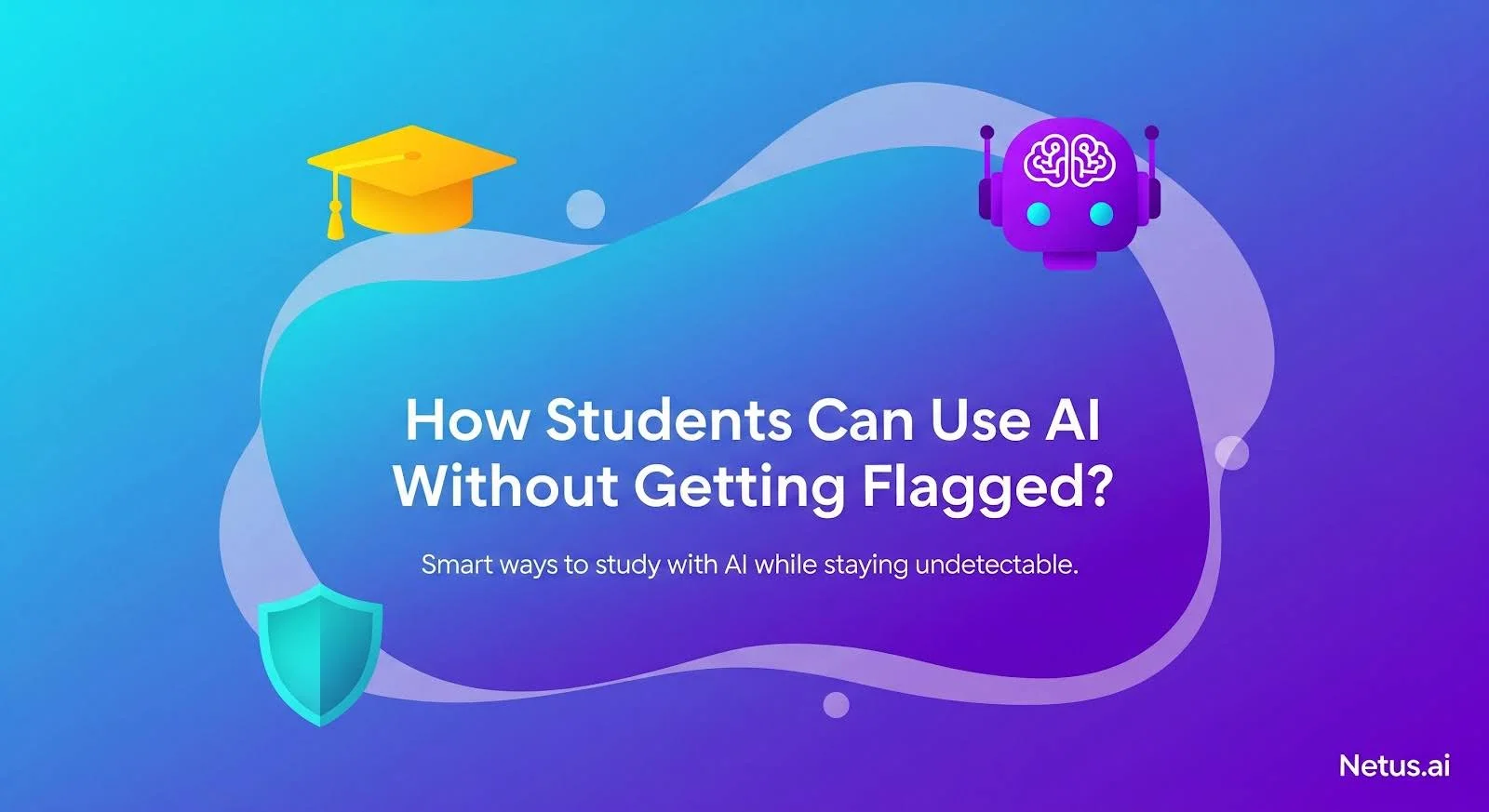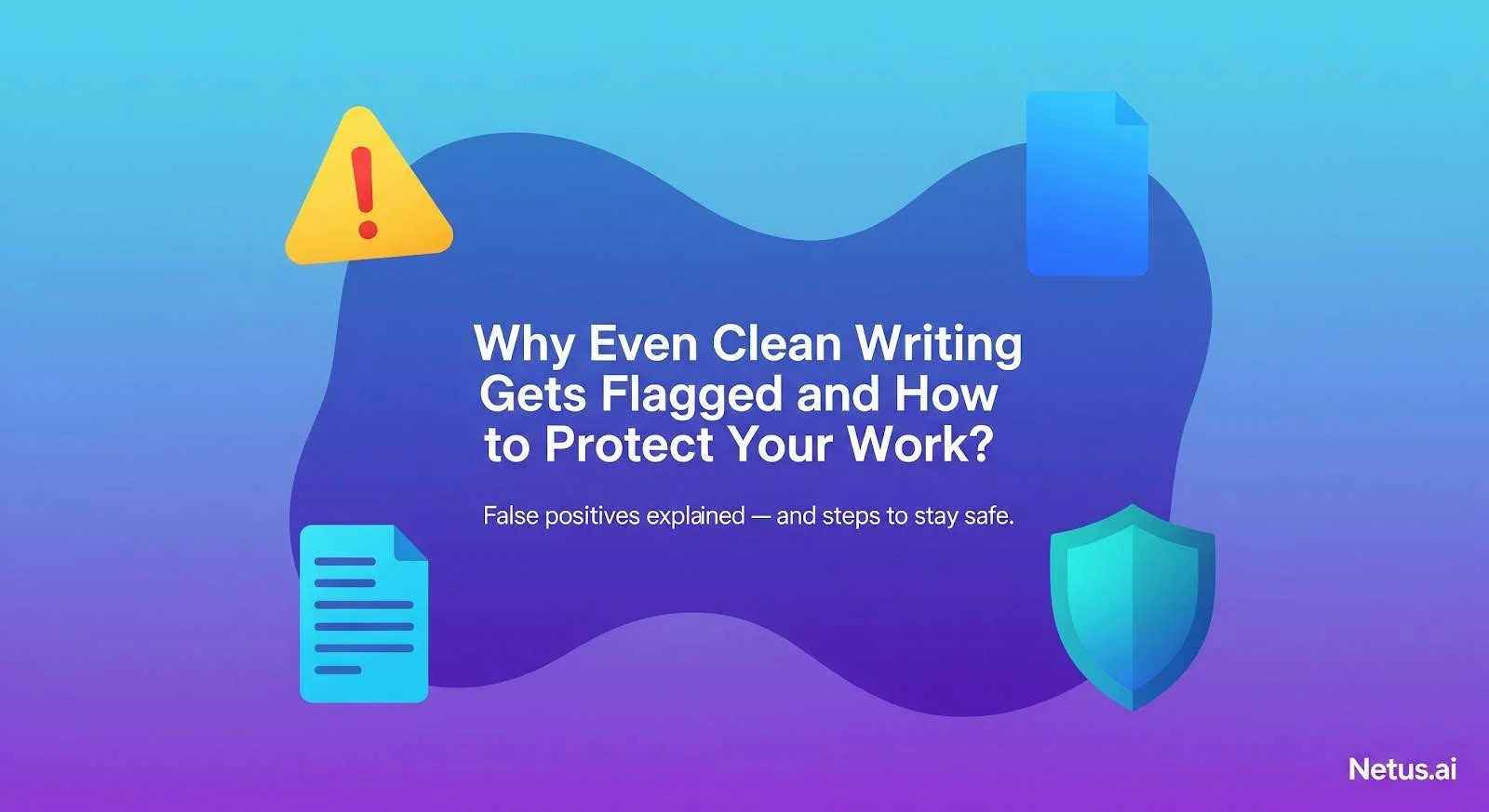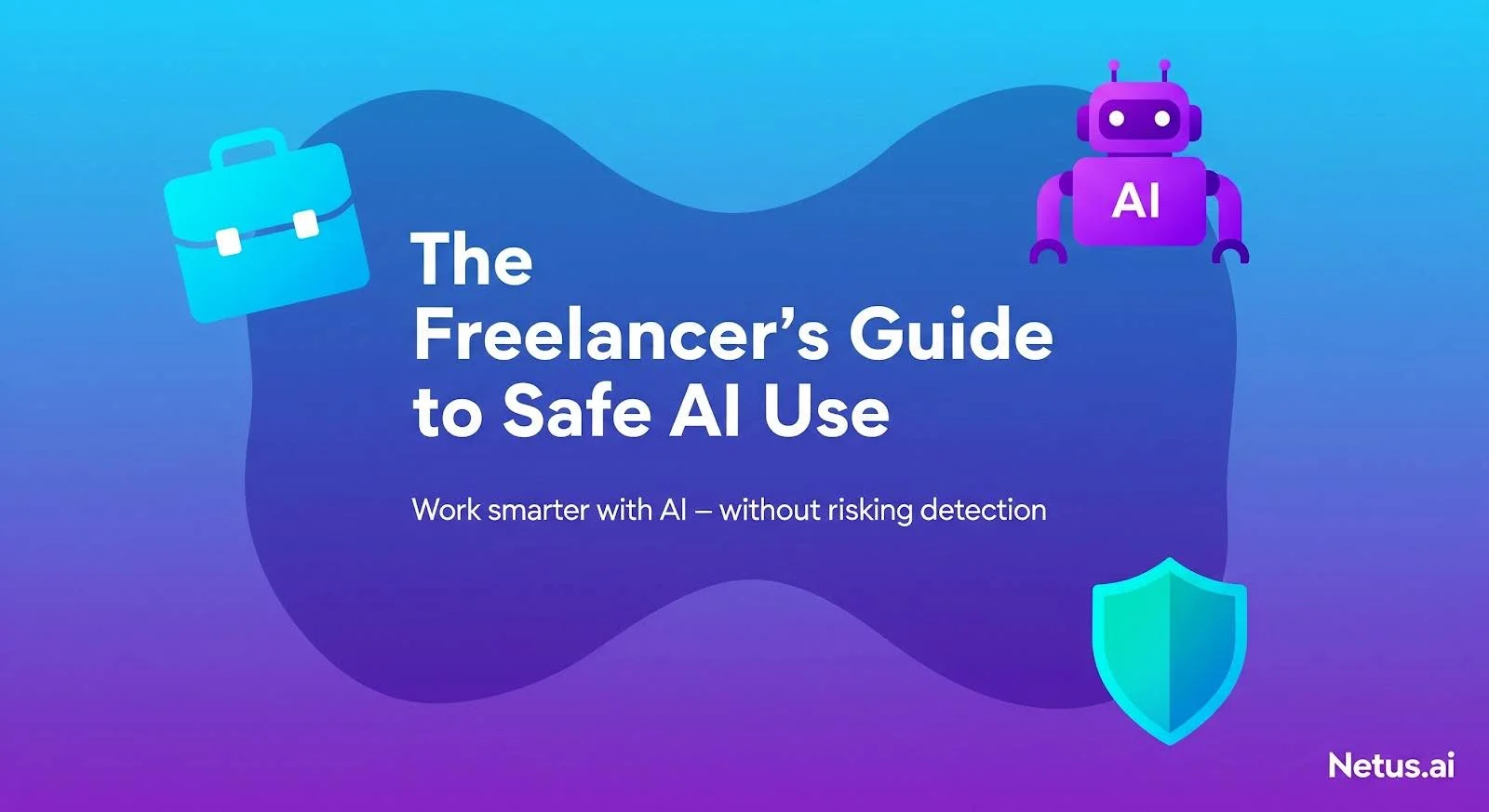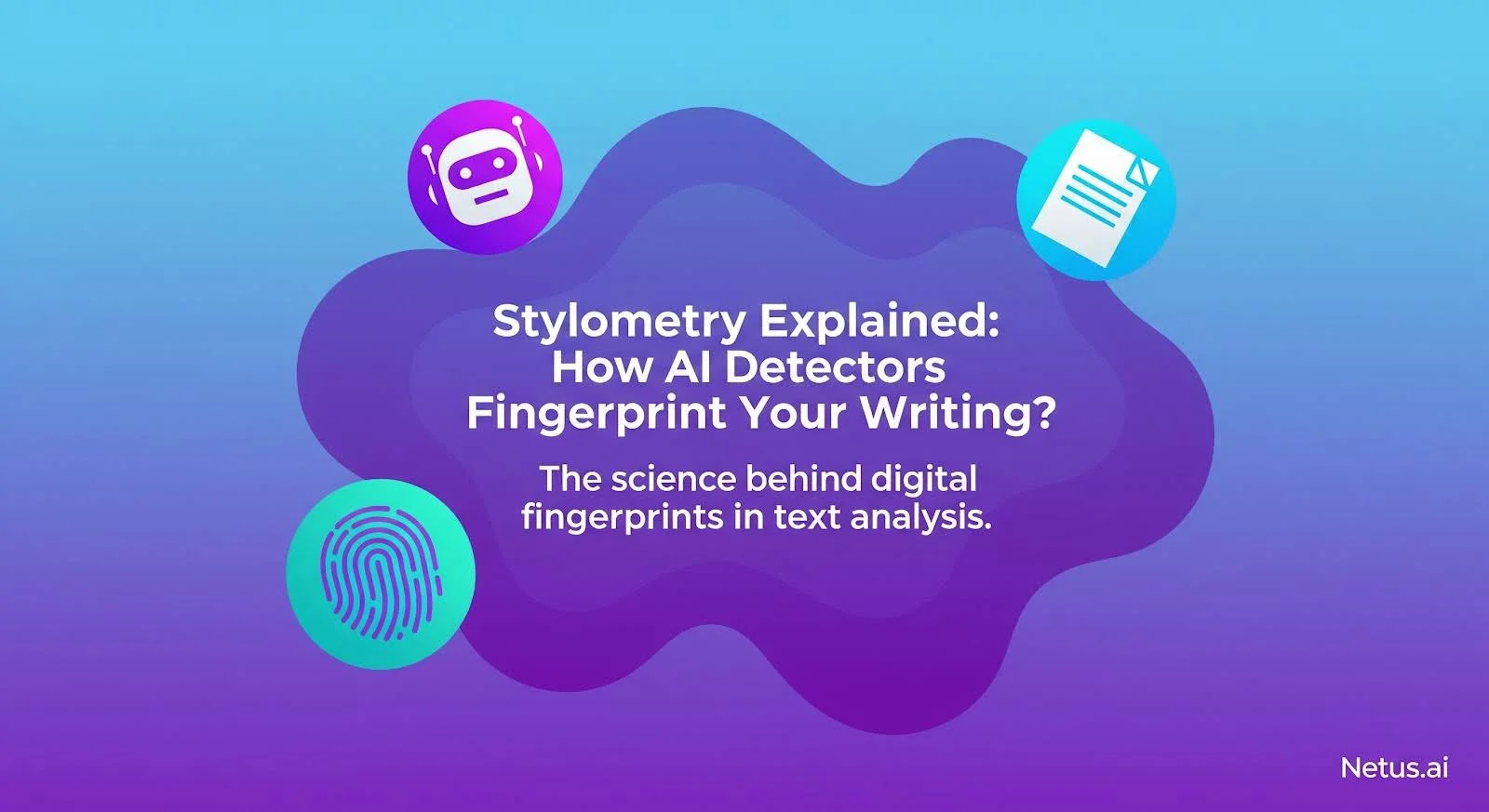You busted your butt on that essay, right? Hours of research, checking sources, making every sentence shine. Then BAM! Turnitin says it’s AI-generated. What the heck?
Sound familiar?
Students face a growing problem: AI detection tools like Turnitin are falsely flagging genuine academic work as AI-generated.
Algorithms cannot differentiate between sophisticated human writing and advanced AI, leading to unfair penalties. Students are therefore punished for their honest work, as these algorithms fail to recognize the complexity of their writing.
Why?
Because these tools don’t check who wrote the content. They check how it reads.
If your essay has:
- Too perfect sentence flow
- Low sentence variation (burstiness)
- Predictable phrasing patterns.
It might get flagged, whether AI wrote it or not.
Students often use AI tools like ChatGPT or Gemini for ideas and drafts, then refine with Grammarly or Hemingway. Even if students write their own work, AI detectors may still flag it as a false positive without careful rewriting.
Understanding Why Detectors Flag Student Work
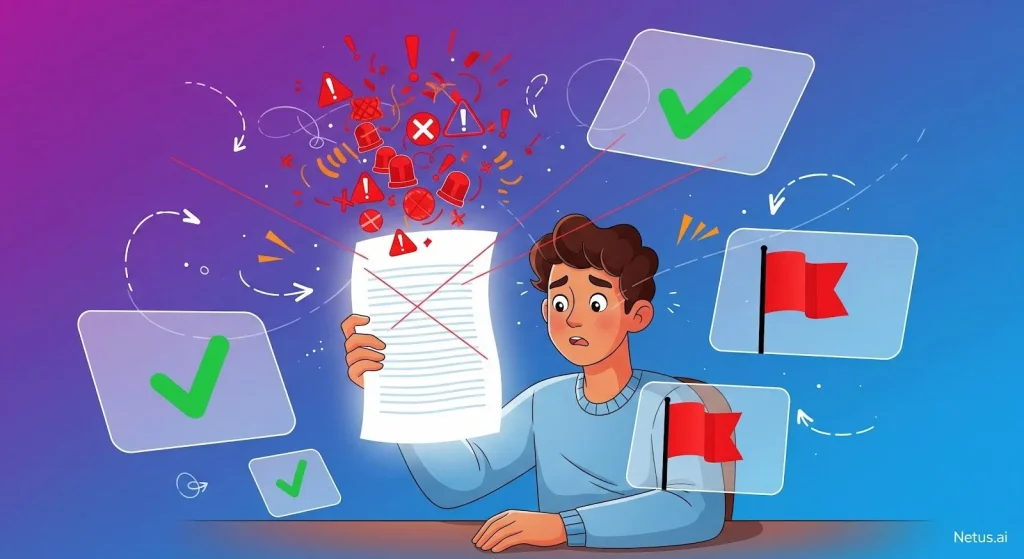
AI detectors aren’t checking for plagiarism or intent. They’re scanning for writing patterns that resemble AI-generated text. This is where most students get caught, often without realizing it.
Here’s what triggers academic AI detectors like Turnitin, ZeroGPT or HumanizeAI:
1. Overly Predictable Sentence Structure (Low Perplexity)
AI-generated text flows in a highly predictable way. Detectors measure perplexity, a score that shows how easy it is to guess the next word in a sentence. If your sentences follow too smooth or robotic a flow, that’s a red flag.
2. Flat Burstiness (Little Sentence Variety)
Humans naturally vary their sentence lengths. A short punchy line here. A longer descriptive one there.
AI? Not so much. It often outputs sentences of similar length and rhythm. Detectors flag this lack of burstiness.
3. Stylometric Fingerprints
Tools like Turnitin’s AI Writing Indicator analyze your unique writing style:
Your typical word choices, sentence length patterns, use of passive voice and even punctuation frequency. AI-generated content leaves statistical fingerprints that differ from most student writing styles.
4. Hybrid Content Risks
Many students blend AI and human writing:
- Brainstorm with ChatGPT
- Draft manually
- Polish with Grammarly
Detectors don’t separate the parts. Even if just 30% of your work feels AI-like, the whole document could get flagged.
AI Tools That Are Actually Student-Safe
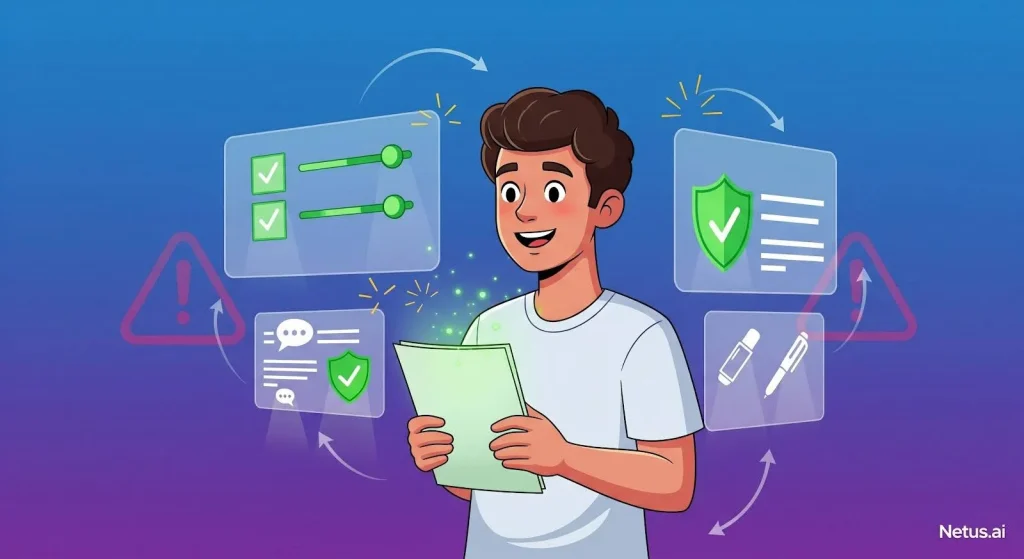
If you’re a student trying to navigate AI writing without getting flagged, picking the right tool matters. Not all AI tools are built for academic safety. Some will help you sound human and bypass detection. Others will do the exact opposite and increase your risk.
Here’s a breakdown of AI tools that students can safely use (with care):
NetusAI (Best for Detection + Rewriting)
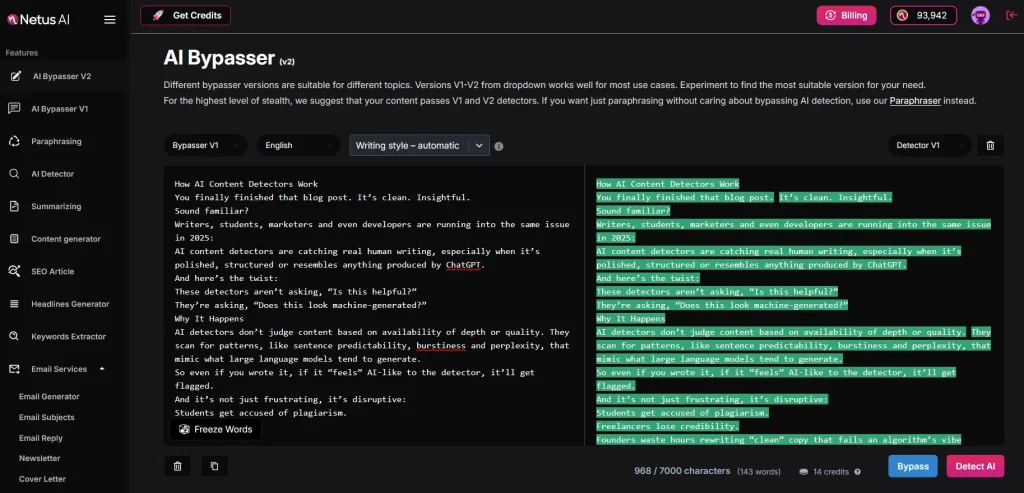
- Why it’s safe for students:
NetusAI bypasser is built around the exact patterns that AI detectors scan for (like perplexity and burstiness). Its real-time detection + rewriting loop helps you identify risky sections before submission. - What you should use it for:
Rewriting flagged paragraphs, running final detection checks and tweaking tone and flow. - Caution:
Netus helps with structure and rhythm, but always makes final edits in your own voice.
Smodin (For Polishing, Not Writing)
- Why it’s useful:
Smodin helps clean up grammar, punctuation and clarity without rewriting entire sentences in an “AI-like” way. - What to use it for:
Proofreading after you’ve finalized your core content. - Caution:
If you over-rely on Smodin AI-rewrite features (like tone adjustment), it can flatten your writing style and increase detection risk.
QuillBot (For Light Paraphrasing , Use Sparingly)
- When to use:
If a single sentence sounds too robotic or flagged by a detector, QuillBot can help lightly paraphrase it. - Caution:
Don’t run full essays through QuillBot. Detectors are trained on its patterns too.
Google Docs Revision History (For Proof of Authorship)
How it helps:
If your teacher challenges you, Google Docs’ built-in revision history shows when and how you built your paper over time.
Bottom Line for Students:
- Brainstorm with AI.
- Write your first draft yourself.
- Run detection checks
- Rewrite risky sections, but retain your voice.
- Always edit and fact-check before submitting.
Final Thoughts:
AI itself isn’t the problem, but poor usage is. Students commonly use AI for research and brainstorming. The issue arises when submitting obvious, untouched AI-generated content, which triggers detectors.
If you want to stay safe:
- Use AI for drafts and inspiration, not for final submissions.
- Run every important piece through a detector first to spot risky sections.
- Reshape flagged areas with a true humanizer, not just a word spinner.
Tools like NetusAI humanizer don’t just rephrase, they help restructure tone, rhythm and flow so your work sounds like you, not a bot. Before you submit that next paper or essay, drop your draft into the NetusAI detect–rewrite–retest loop. It’s fast, it’s targeted and most importantly, it helps you stay human.
FAQs
Yes, but only if you rewrite the output carefully. Direct ChatGPT responses often trigger AI detectors like Turnitin. Tools like NetusAI help you restructure, adjust tone and test for human-like patterns before submission.
No. In fact, using grammar checkers like Grammarly can make your content sound even more AI-like by over-polishing. AI detectors look at rhythm and structural patterns, not just grammar.
Usually not. Simple paraphrasers just swap words without fixing sentence flow or stylometric patterns. You need tools that adjust burstiness, perplexity and tone , like Netus’s AI Bypasser.
Turnitin’s AI Writing Indicator flags content based on statistical patterns, even if edited by a human. Always scan your final draft.
A 3-step loop:
- Draft with AI (if needed) →
- Rewrite flagged parts with NetusAI →
- Retest with a detector like Turnitin or Netus built-in detection.
Sometimes. Adding casual tone and varied sentence lengths increases burstiness, which can reduce flagging. But structure and stylometry still matter. The safest route is proper rewriting and testing.
Not always. Free tools usually have word limits and lack real-time detection feedback. For serious academic work, students should use platforms that offer both rewriting and AI detection , like Netus.
The bypass module handles up to 7,000 characters, ideal for longer texts. For shorter pieces, the targeted rewriter works well for segments around 400 characters.
Yes. Netus supports 36 languages, making it suitable for international students writing in English, Spanish, French and more.
School policy and transparency are key. NetusAI helps students avoid false positives on human-written drafts and responsibly rewrite AI-assisted sections.

